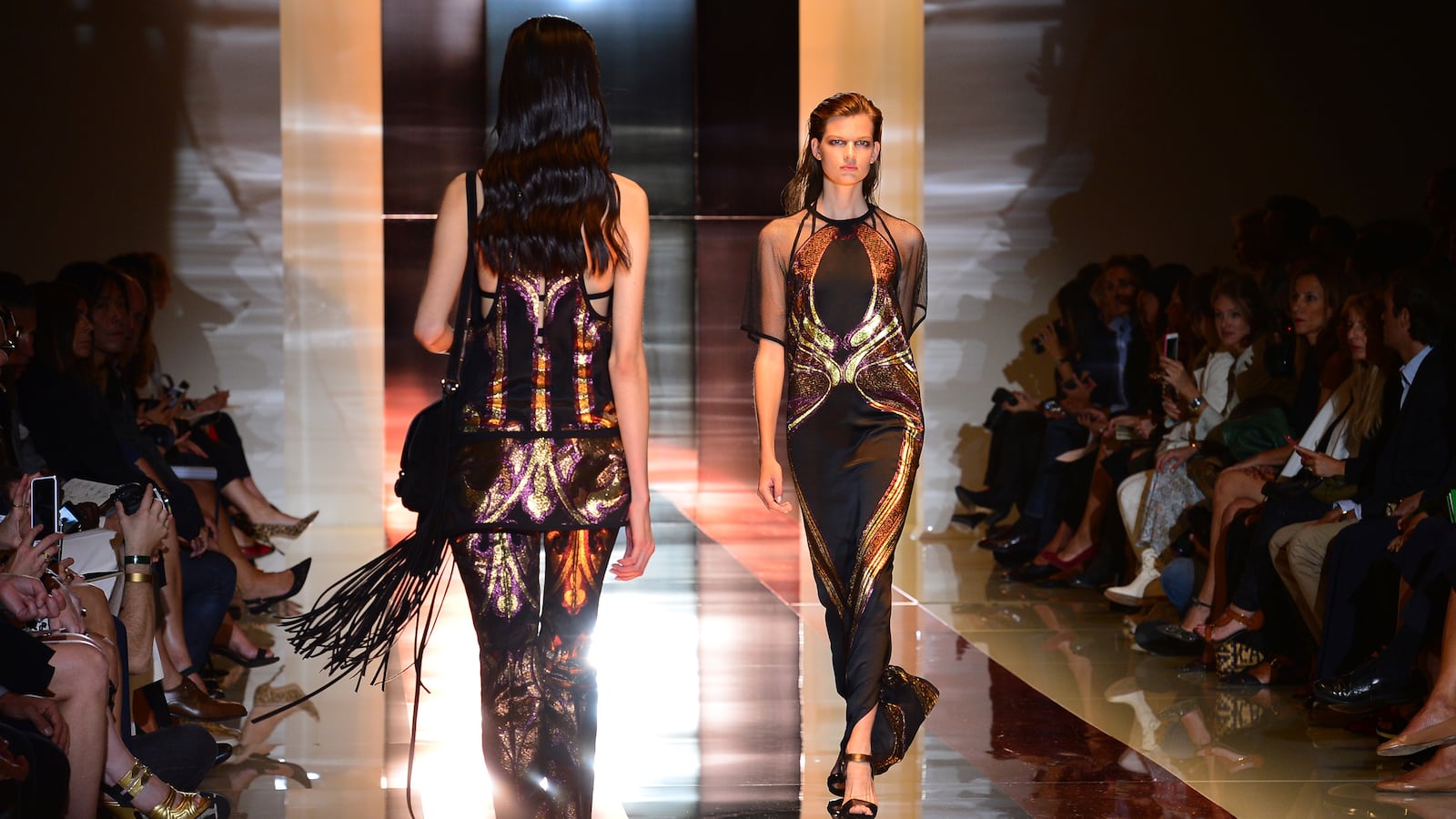
In the Happy Cafe on Milan’s Piazza Oberdan, a punk kid with a print of the Union Jack covering one trouser leg took a bite of his panini and declared: “The first one is over.”
He was referring to the hubbub of the Gucci Spring/Summer 2014 ready-to-wear show, which kicked off Milan Fashion Week on Wednesday.
Once through the door to the show, guests were greeted by glasses of champagne and a chic white décor. But then Frida Giannini, Gucci’s creative director, sent a stream of exquisite art nouveau butterflies down the runway, drawing on the house’s codes of rich ornamentation and elegance, but redefining its parameters with a subtle sports aesthetic.
In the show notes, Giannini said that she “set out to do a feminine take on technical outfitting, crafted with Gucci’s codes. Intricate elegance enlivened by refined ornamentalism that takes its cue from Erté illustrations.” (Erté was a 20th-century French illustrator who designed more than 200 covers of Vogue and Harper’s Bazaar between 1915 and 1937.)
Backstage, wearing leather trousers and high heels, Giannini told The Daily Beast: “It is always a challenge to create a collection, but it was intriguing to work with the [sport] aesthetic.”
The designer said she wanted to create “new proportions and detailing to turn gymnastic shapes into style essentials.”

The combination and contrast of the two styles—classic elegance and sportswear—made for a collection that was both rich and decorative, suitable for the house’s older clients (some of whom gathered backstage in retro gold outfits) as well as the young ones.
Models came down the runway with take-it-or-leave-it attitudes, slicked-back long hair, and sexy high-heeled shoes strapped across the feet.
The first look combined a see-through mesh top, gym style, with a pair of baggy baseball-inspired shorts. These were cut wide and decorated with strokes of what looked like hand-drawn lines of orange and reds, like one might find on a Murano vase. The outfit succeeded in taking inspiration from the sports world and yet transcending it, resulting in a kind of rough-and-tumble elegance.
In another play, a black jumpsuit with shiny metallic green lines down the side and around the armholes looked like a refined Adidas tracksuit, designed for eveningwear.
Many of the designs were revealing, giving glimpses of flesh or underwear. A slit opened over the breastbone on an elegant black dress, and below-the-knee cocktail dresses came with plunging necklines—and looked like sporty tango dresses or cool evening outfits, depending on the material.
For the most part, the collection looked like dazzling art, with elaborate decorative butterfly-like patterns shimmering on black backgrounds and adorning silk trousers or oblong tops. Iridescent colors came in combinations of deep reds, purples, golds, and greens.
Beyond her artisanal reworking of sports basics, Giannini also took inspiration from classic design from the tunic to the kimono, using kimono cuts for long dresses with deep slits.
New proportions and detailing like the baseball shorts kept what could be over-the-top decoration in check, giving it a modern edge.
Giannini took the sometimes gaudy sporty look—perhaps favored by the sports WAGs of yesteryear—and spun it into something beautiful, wearable, and modern. The Gucci woman for next spring is someone uncontrived, seductive, sensual, and strong.






